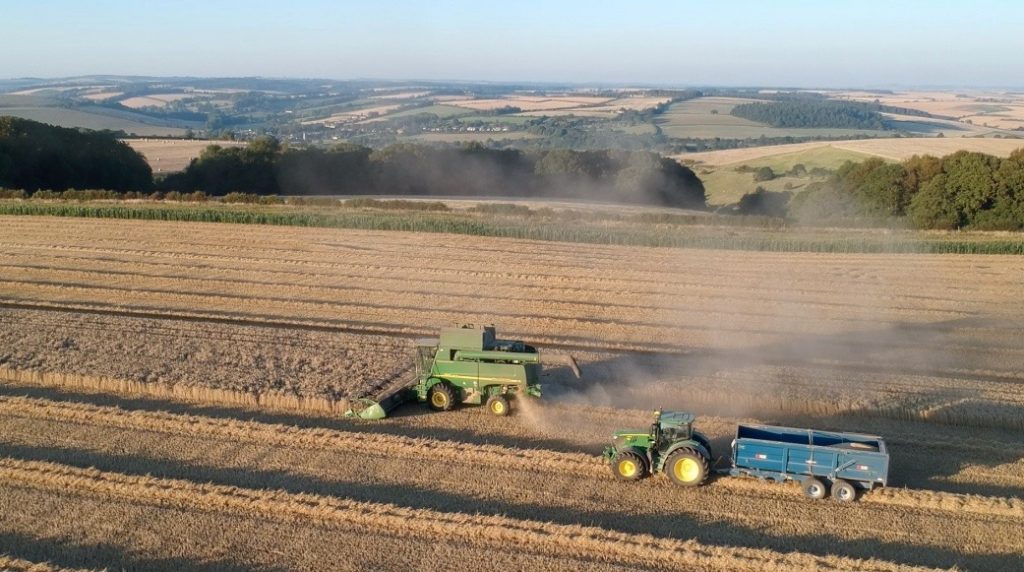
After a week’s weather break in the middle, which gave us an opportunity to sow next year’s oilseed rape crop, we resumed harvest in the week of Aug 19th, and stormed through to finish on bank holiday Monday, in fine sunny weather. The combine, despite its age, performed really well, aside from a few irritating electrical problems, and we covered the last 140 hectares in 7 days. For a few days we were sowing rape in the damp mornings and returning to the combine in the warm afternoons, by which time the wheat was dry enough to put straight on the heap without putting it through the drier. During the same week the poppy team arrived and knocked off the 43 ha of poppies in a day and a bit. Both wheat and poppies have yielded well fortunately, bearing in mind how prices have fallen over the last couple of months, due to good harvests in many areas of the world, and to continuing uncertainty as to future trading conditions for the UK. The story was not the same for the oilseed rape or the spring barley, as covered last month.
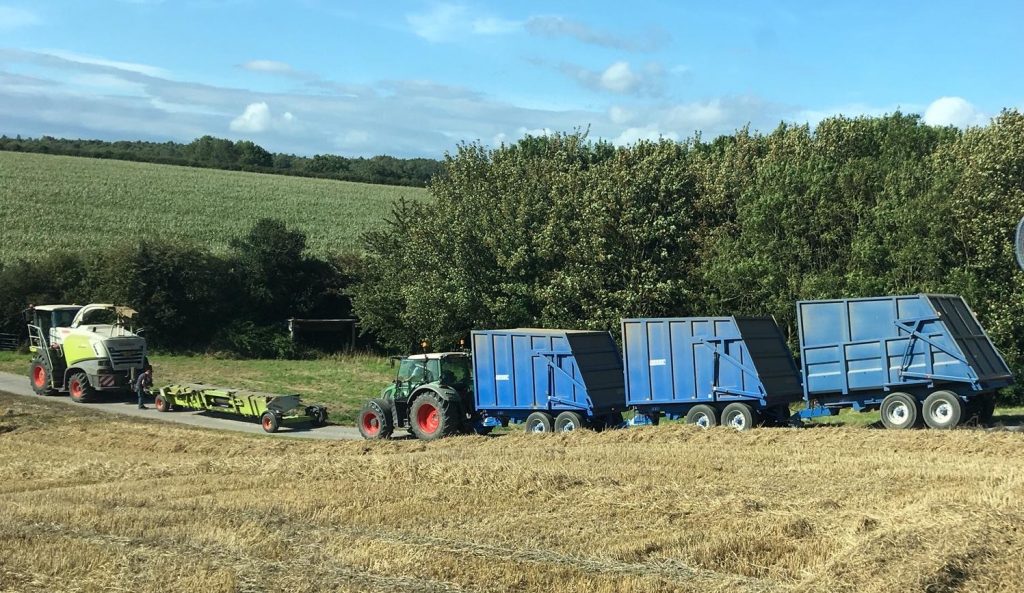
The poppy team rolls into Thornicombe. You wouldn’t want to meet this lot in a narrow lane if you can’t reverse your car!
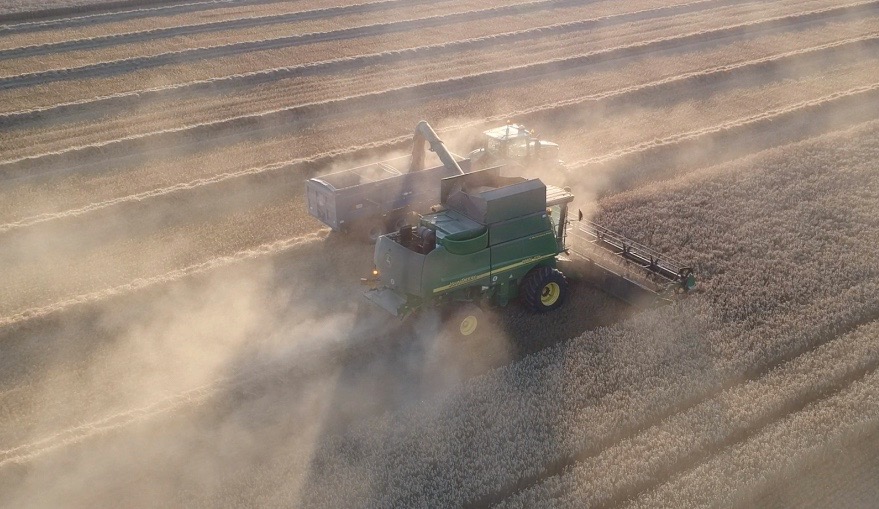
Some of the wheat had got a bit too dry by the time we got to it, and the low sun in the evening makes the dust very visible.
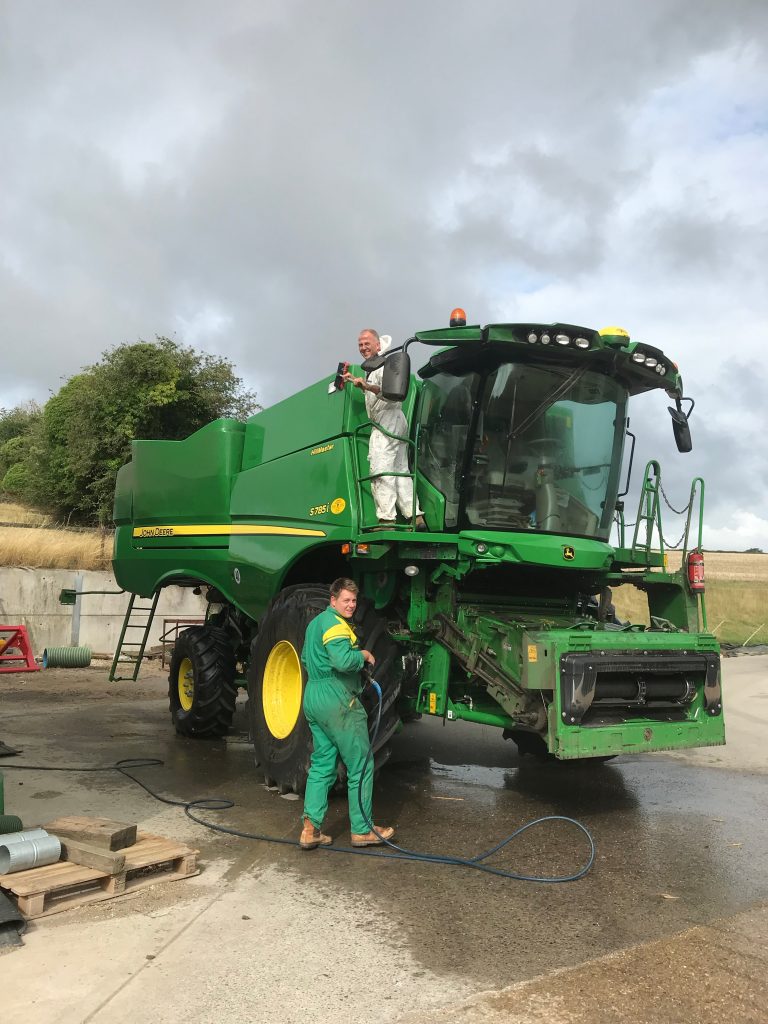
Tom and Geoff from Smart Ag Services clean up their demonstrator combine after we had covered it in dust in one of our wheat fields, before heading off to show the machine off to other interested farmers.
We are trying something a bit different for next year, we have sown 16 hectares (40 acres) of arable land to a herbal grazing ley, this is a seed mixture containing grasses including timothy, cocksfoot and a couple of fescues, also red and white clovers, as well as other plants such as sainfoin, plantain, lucerne, birdsfoot trefoil and chicory. This is a mixture that will not receive nitrogen fertiliser, and will be able to fix nitrogen itself with the leguminous plants in the mixture. The intention is to leave it in place for at least 3 years, then return it to arable. We have embarked on this experiment for 3 main reasons, firstly our usual all-arable rotation is quite demanding on the soil, and does not rebuild organic matter as quickly as you would with grazing animals on a good ley. Secondly we would like to fatten our own cattle. Up till now we have sold our beef youngstock at the end of their second summer, they are not quite fit to kill at that stage, and we have not had the space or feed for them for a second winter, so selling them to someone who does has made sense. Right now the beef market is quite depressed, so we are going to gamble that by the time these animals are fit prices may have picked up a bit. Some will spend the winter outside on turnips and silage, and we hope they will fatten quickly next spring on new grass. Thirdly we have been told over and over that the general future thrust of agricultural policy is going to move towards more soil friendly methods, the organic movement has exerted much pressure in the public domain, and if this is the way we are to go, we need to learn some new techniques. Many farmers will argue with this, and will cope with new policies by trying to become more intensive. This may work well on very fertile and productive soils, but perhaps not so well on thin chalk and stony soils as found around here. Sadly the Agriculture bill has fallen at the recent ending of the parliamentary session, and is by no means certain to be re-introduced in a similar shape in the next session. A huge amount of work has been done by farmers and the NFU, as well as legions of others in government and NGOs, to knock the bill into shape, it contained very many good ideas, and for all that work to be binned is shamefully wasteful. There has not been an Agriculture bill since 1947, and a new set of policies which addresses modern circumstances is well overdue. The fear now is that we may get piecemeal legislation introduced in a hurry, which will be required as soon as we leave the EU, that will not have the carefully thought though approach of the bill, and we could suffer the age-old problem of unintended consequences for years to come.
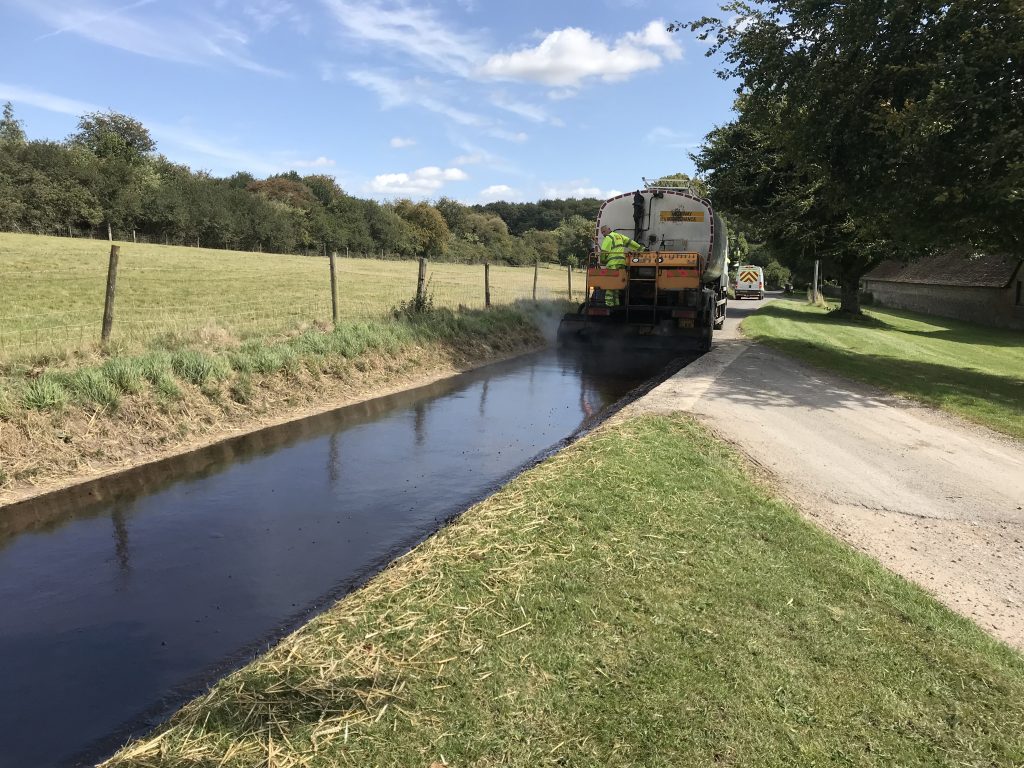
Great excitement during harvest when the council road team came round filling potholes and re-laying rough patches of the lane, and then topping it off with a surface dressing of hot tar and stone chippings. The hot tar looked shiny and steaming before the chippings were laid, two different sizes, 10mm followed by 6mm, to fill in the whole surface, and then a multi-wheeled roller to push it all into the road surface. The road should be good for another 40 or 50 years now, it seems a very long time since it was last done, I am sure I was still at school.
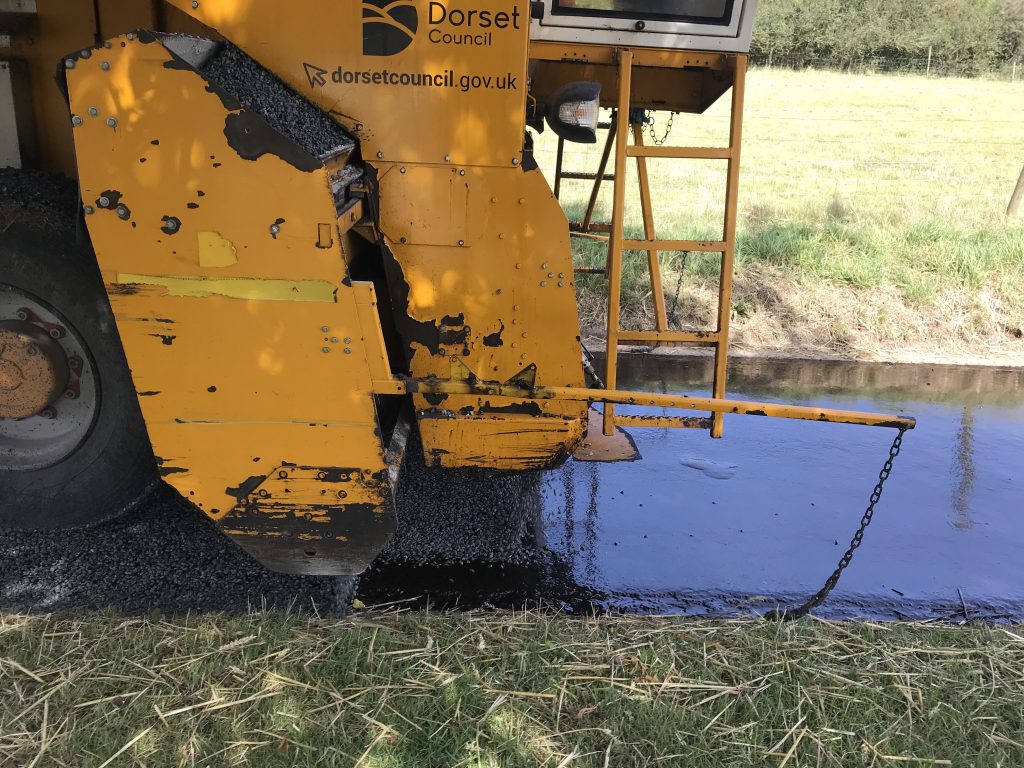

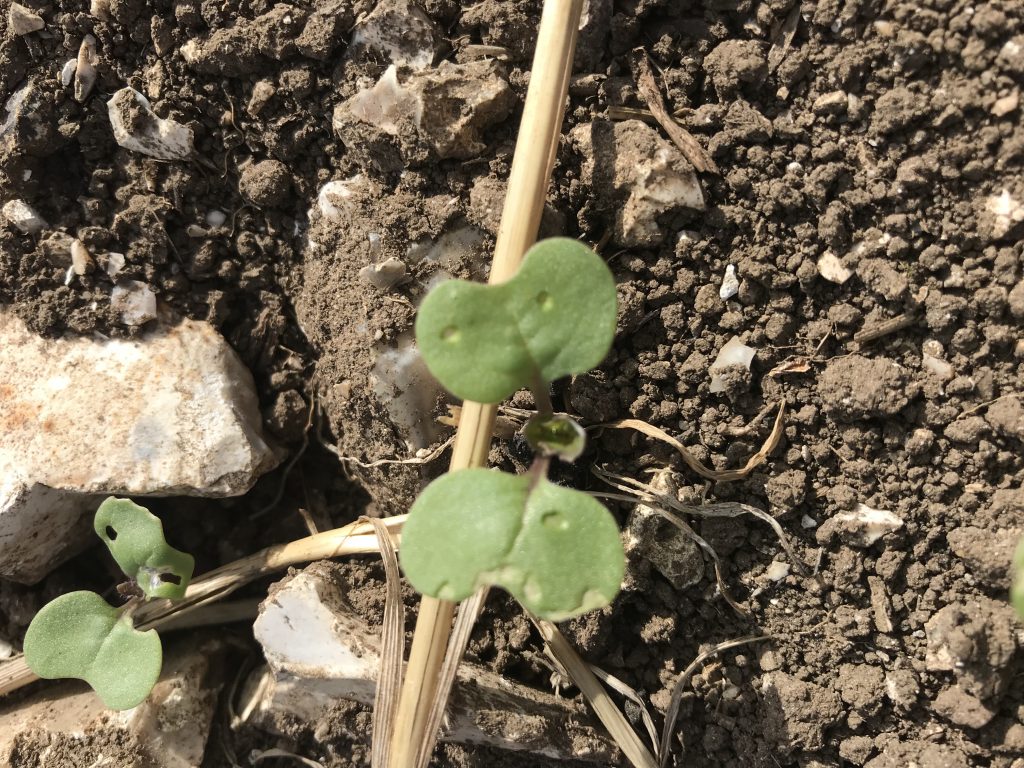
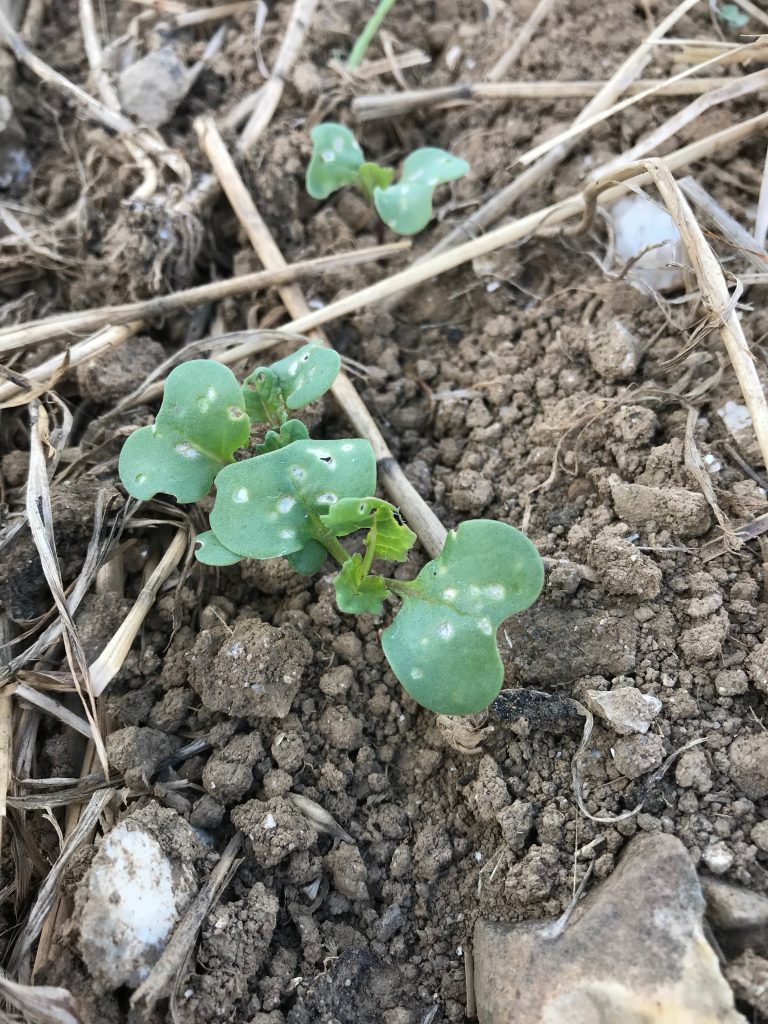
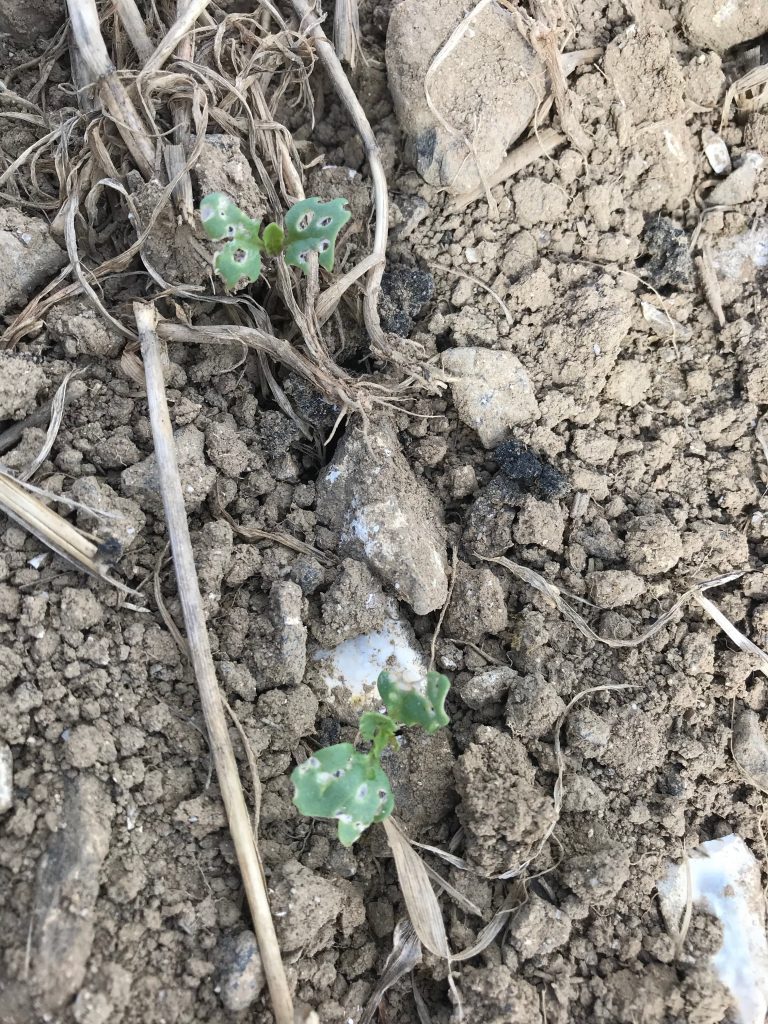
The battle against the dreaded cabbage stem flea beetle continues. As I have reported before, we have little chemical defence against it now, the neonicotinoids are banned, and the beetles are quite widely resistant to pyrethroid sprays, so we have to try other approaches. First of all, we have tried sowing the rape a full 2 weeks earlier than we used to, to try to get the seedlings out of the ground before the beetle arrive in large numbers. Other farmers are trying the opposite, because so far there is little evidence or consensus over the best approach. In our case much of the rape has emerged and is now growing well with 3 or 4 true leaves expanding, by which time we hope the plants are immune to further grazing, although the secondary threat, from hungry larvae hatching in spring from eggs laid by adults now, is still very real. Some people are suggesting grazing with sheep during winter, so that the eggs themselves are eaten by the sheep. We intend to try some of this.
We have also resisted the temptation to apply a pre-emergence weedkiller, because this can reduce the vigour of the seedlings when they emerge. However a problem can come from hedge mustard, which can make a real mess of a rape field, which is only treatable pre-emergence, so we hope that the fields sown to rape this year don’t have too much hedge mustard in them.
Heavy grazing damages so much of the developing plant that it can become desiccated during warm dry weather, and can’t replace the moisture fast enough to survive.
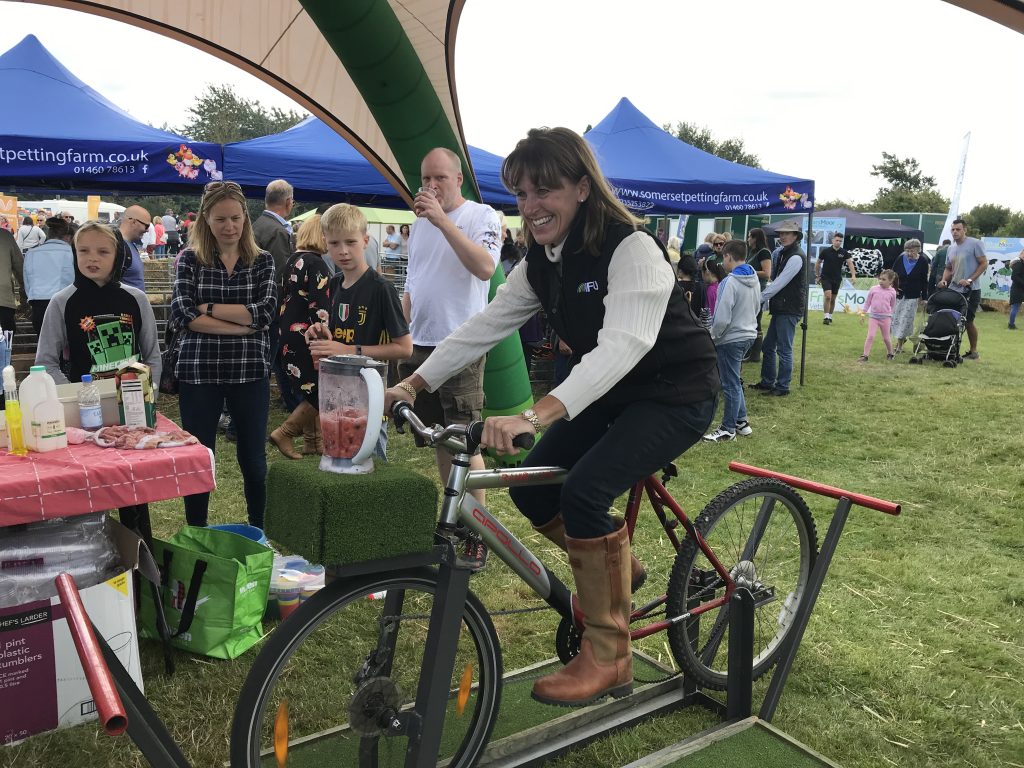
National Farmers Union President Minette Batters tries out John Martin’s smoothie maker on the Fabulous Food and Farming stand at the Dorset County Show
A weekend spent helping at the Fabulous Food and Farming stand at the Dorset County Show was very enjoyable, the weather was kind and thousands of people flocked in to see what the show had to offer. There were the usual attractions of animals, craft exhibits, trade stands, and Bill Galpin’s Terrier racing which is always highly entertaining, as well as the Sheep Show, flying motorbikes, and a whole host of other exhibits. At the FFF area we had Tractor Ted for the small children, Friars Moor Vets giving hands-on calving demonstrations, a specially commissioned film on Arable farming in Dorset shown in the Mobile Rural Dorset Cinema, Bicycle smoothie making, where you make your own smoothie by pedalling, the more you pedal, the smoother your smoothie. We also had walking with Alpacas, which is now officially a Thing. In the tent we gave a demonstration of squeezing oil from rapeseed, and grinding up of wheat, and then mixing the two with salt and water to make playdough.
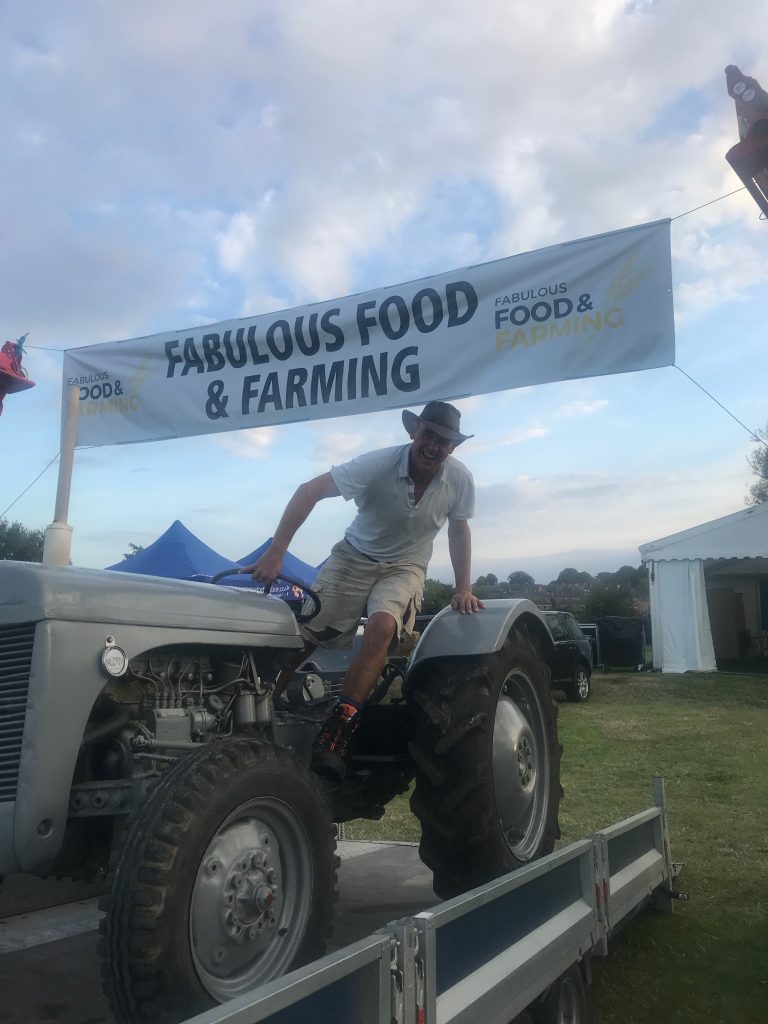
Local fencing contractor James Hill collecting his loaned Grey Fergie tractor from the showground, after it had been clambered all over by children all week end
More Harvest pictures:
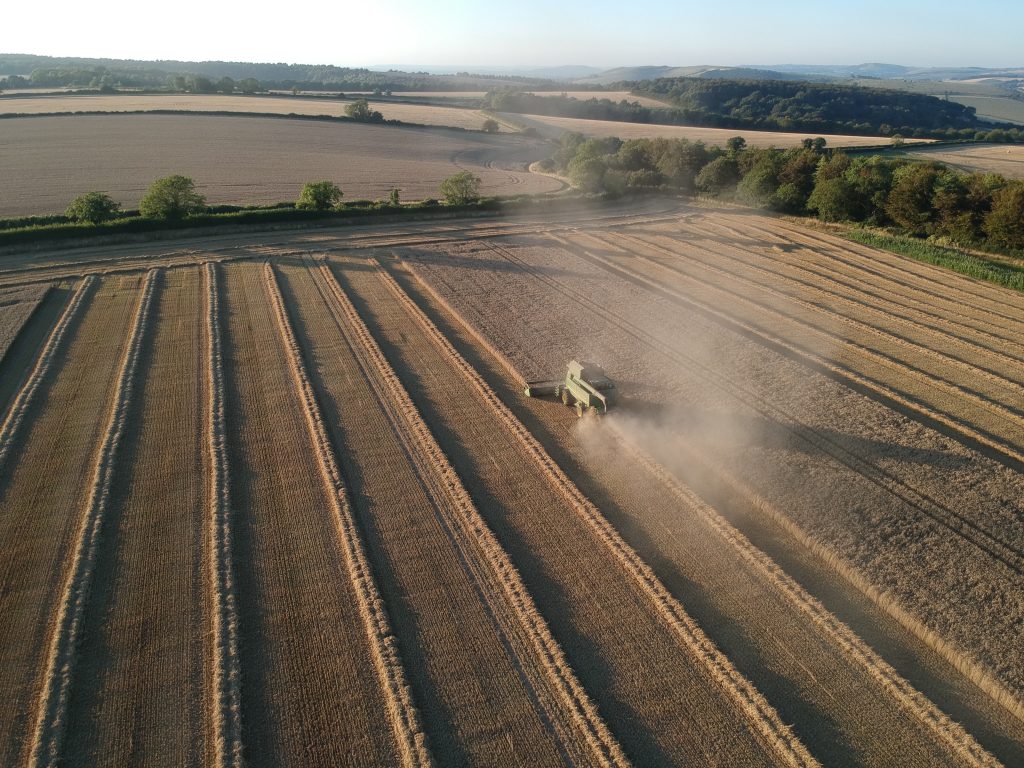
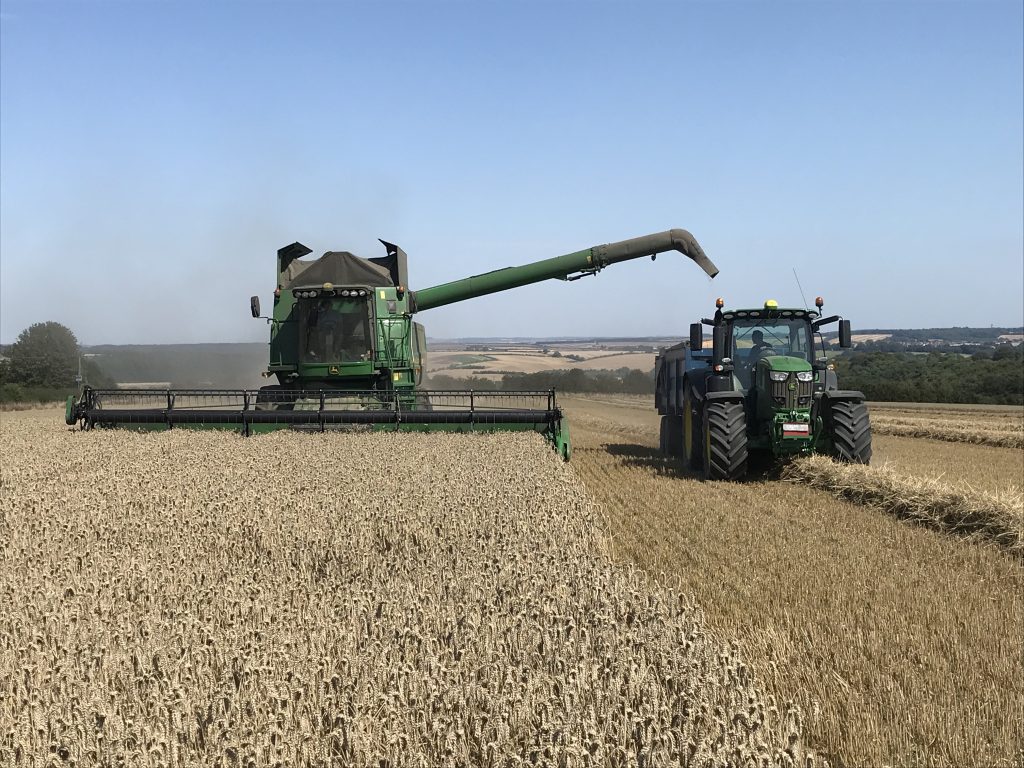
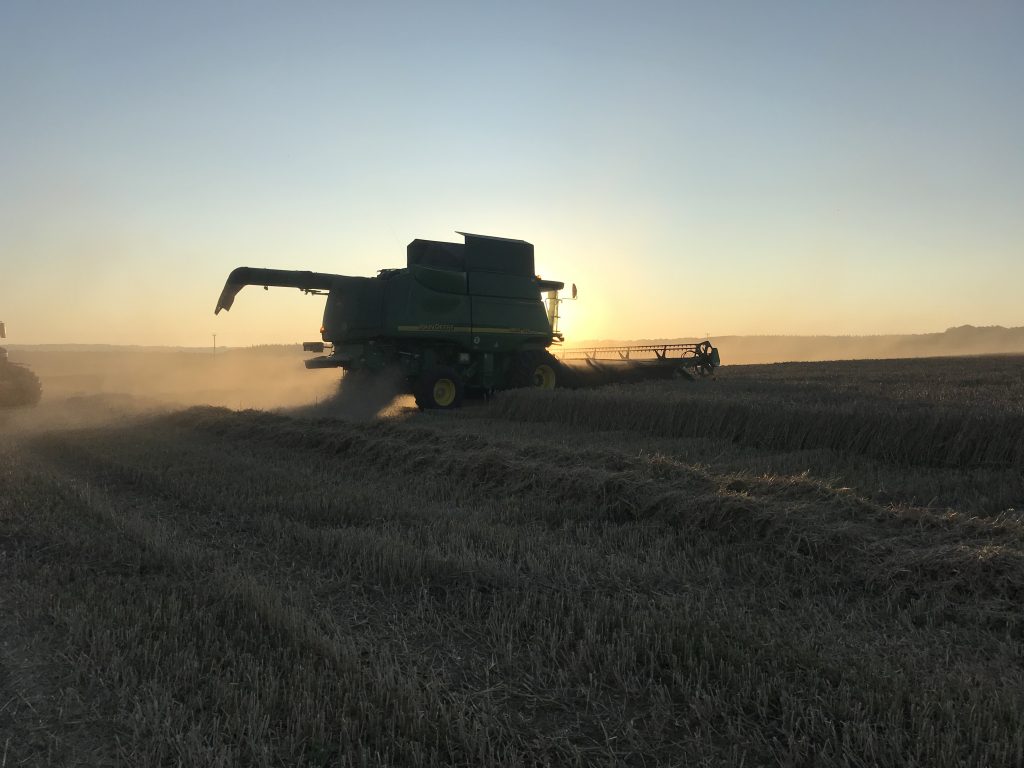
There is a selection of brand new films from this year’s harvest on youtube:
Rudge Hill, combine, dust and the view north

Clearly some sort of breakdown had occurred during the combining of Owls Lodge to have 3 corn carts in the field at the same time.
Other than that, good video, you need a new combine though, all that acreage on such an old machine…….